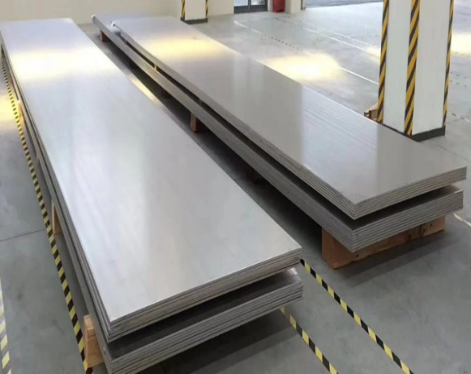In the process of production, machining, welding, testing and heat treatment of seamless steel pipes, the surface area of seamless steel pipes (carbon copper pipes, stainless steel pipes) will accumulate iron oxide, welding slag, grease and other dirt, making the seamless steel pipe resistant to Corrosion performance becomes stronger.
After the seamless steel pipe is cleaned by pickling liquid, it can remove the stolen goods on the surface of the seamless steel pipe; after passivation treatment, the seamless steel pipe surface can form a protective film to prevent oxidation, thereby improving the corrosion resistance of the seamless steel pipe Performance to ensure the safe operation of the production process.
Whether the passivation solution and the passivation solution are formulated properly or not directly affects the quality of pickling passivation. Therefore, the appropriate formula should be determined according to the nature of the pipe.
Passivation technology
Passivation is the last process step in chemical cleaning, it is a key step, and its purpose is to prevent corrosion of materials. After the boiler reactor and other equipment are rinsed with pickling water, the metal surface is very clean, very activated and prone to corrosion. Therefore, passivation treatment must be carried out immediately to form a protective film on the metal surface of the cleaned seamless steel pipe to slow down corrosion. The equipment is fully pickled and passivated to remove all kinds of oil stains, rust, oxide scale, welding spots and other dirt. After treatment, the surface becomes uniform silver white, which greatly improves the corrosion resistance of seamless steel pipes. It is suitable for various types of carbon steel seamless steel pipes and Its equipment.
Phosphating technology
Phosphating is a process of forming a phosphate chemical conversion film by chemical and electrochemical reactions. The phosphate conversion film formed is called a phosphate film. The main purpose of phosphating is: to provide protection to the base metal of seamless steel pipes and to prevent metal from being corroded to a certain extent; for primer before painting to improve the adhesion and anti-corrosion ability of the paint film layer; in the metal cold working process Used for anti-friction lubrication. Phosphating is a commonly used pretreatment technology. In principle, it should be a chemical conversion film treatment. It is mainly used for phosphating on the surface of steel. Non-ferrous metals (such as aluminum and zinc) can also be phosphated.
Tips:In case ASTM A53 Grade B in ERW (electric resistance welded) pipe, the weld seam shall be done the heat treatment with a minimum 1000°F [540°C]. In this way the no untempered martensite remains.In case ASTM A53 B pipe in cold expanded, then expansion should not exceed 1.5% of the required OD.
After the seamless steel pipe is cleaned by pickling liquid, it can remove the stolen goods on the surface of the seamless steel pipe; after passivation treatment, the seamless steel pipe surface can form a protective film to prevent oxidation, thereby improving the corrosion resistance of the seamless steel pipe Performance to ensure the safe operation of the production process.
Whether the passivation solution and the passivation solution are formulated properly or not directly affects the quality of pickling passivation. Therefore, the appropriate formula should be determined according to the nature of the pipe.
Passivation technology
Passivation is the last process step in chemical cleaning, it is a key step, and its purpose is to prevent corrosion of materials. After the boiler reactor and other equipment are rinsed with pickling water, the metal surface is very clean, very activated and prone to corrosion. Therefore, passivation treatment must be carried out immediately to form a protective film on the metal surface of the cleaned seamless steel pipe to slow down corrosion. The equipment is fully pickled and passivated to remove all kinds of oil stains, rust, oxide scale, welding spots and other dirt. After treatment, the surface becomes uniform silver white, which greatly improves the corrosion resistance of seamless steel pipes. It is suitable for various types of carbon steel seamless steel pipes and Its equipment.
Phosphating technology
Phosphating is a process of forming a phosphate chemical conversion film by chemical and electrochemical reactions. The phosphate conversion film formed is called a phosphate film. The main purpose of phosphating is: to provide protection to the base metal of seamless steel pipes and to prevent metal from being corroded to a certain extent; for primer before painting to improve the adhesion and anti-corrosion ability of the paint film layer; in the metal cold working process Used for anti-friction lubrication. Phosphating is a commonly used pretreatment technology. In principle, it should be a chemical conversion film treatment. It is mainly used for phosphating on the surface of steel. Non-ferrous metals (such as aluminum and zinc) can also be phosphated.
Tips:In case ASTM A53 Grade B in ERW (electric resistance welded) pipe, the weld seam shall be done the heat treatment with a minimum 1000°F [540°C]. In this way the no untempered martensite remains.In case ASTM A53 B pipe in cold expanded, then expansion should not exceed 1.5% of the required OD.









